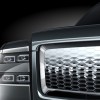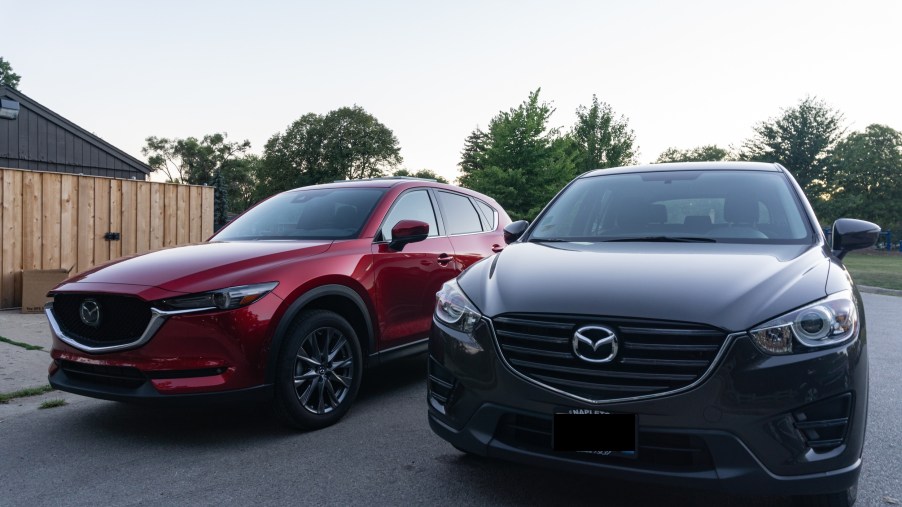
2016 vs. 2020 Mazda CX-5: The Differences a Redesign Makes
Sometimes, vehicles don’t change much from year to year besides adding extra standard features. Case in point, the Toyota 4Runner; this is often a boon for used shoppers. Others, though, change more significantly. Such is the case with the Mazda CX-5, which was redesigned for 2017 and was recently updated for 2020. But how much did the redesign actually change about Mazda’s most popular (and arguably best) SUV/crossover?
Luckily, my parents own a 2016 Mazda CX-5 that they bought new. And while I had the 2020 CX-5 Signature loaner, I decided to compare the 2 generations of crossovers back-to-back.
2016 vs. 2020 Mazda CX-5: specs and features
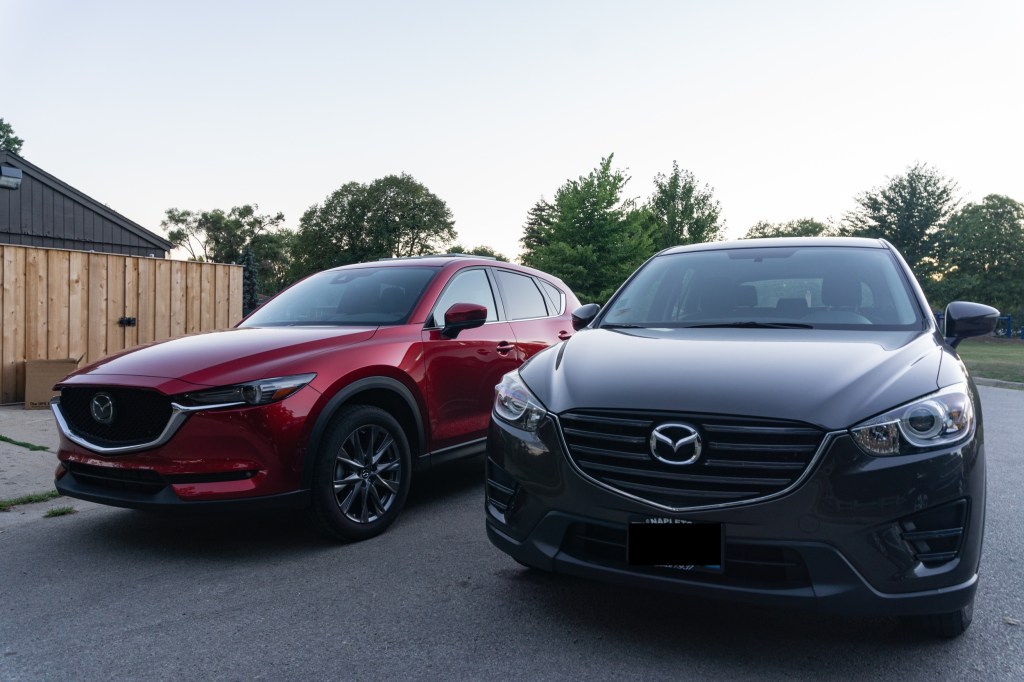
It’s worth noting that my parents’ 2016 Mazda CX-5 isn’t directly comparable to the 2020 CX-5 in terms of features. Theirs is a Sport, which is the base trim, albeit with a few options. Mine is the range-topping Signature, which didn’t even exist until 2019.
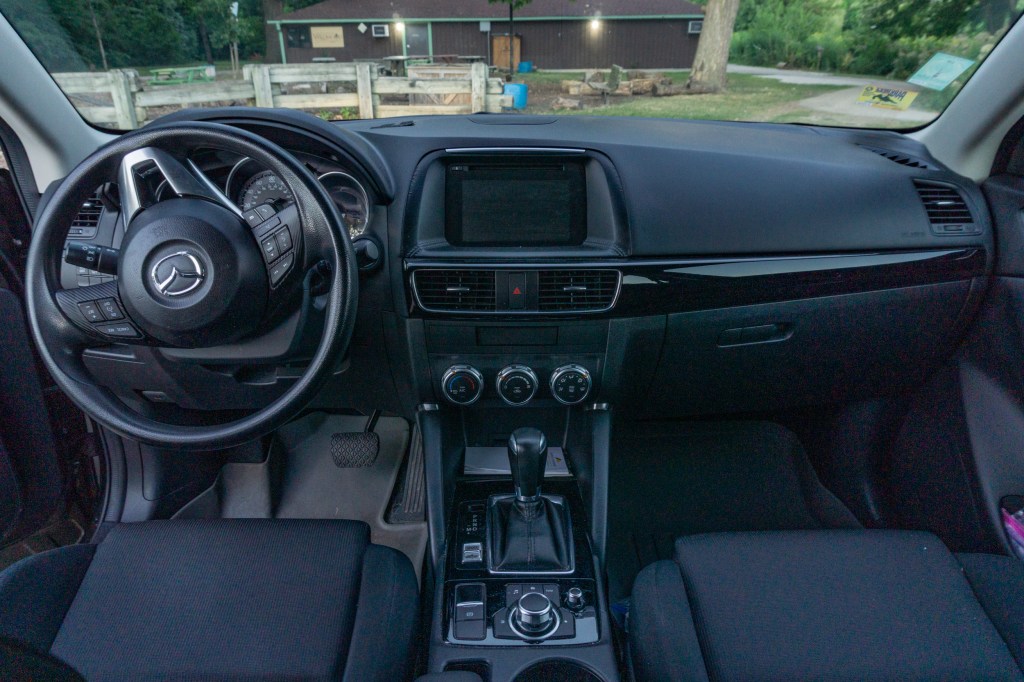
But we can still compare the 2016 and 2020 Sport features. In 2016, the Mazda CX-5 Sport came standard with cloth seats, Bluetooth, keyless entry with push-button start, a 60/40 split-folding rear seat, and steering-wheel-mounted audio controls, Autotrader reports. My parents’ model has the Rear Camera Package, which adds a backup camera and a 7” color infotainment touchscreen. This package would later become standard in the ‘2016.5’ model, Car and Driver reports.
In addition to all that, the 2020 Mazda CX-5 Sport has LED headlights, Android Auto, Apple CarPlay, and a full ADAS suite, Autotrader reports. It also features Mazda’s ‘G Vectoring Torque Control,’ Autoweek reports, which reportedly improves corner turn-in by briefly cutting torque and shifting weight forward. The Signature trim adds Nappa leather upholstery, heated rear seats and steering wheel, heated and ventilated front seats, navigation, a heads-up display, and a 360° camera system with parking sensors.
Powertrain-wise, though, the 2016 and 2020 Mazda CX-5 Sport trims are fairly similar. Although the 2016 model came standard with a 2.0-liter four-cylinder, front-wheel drive, and a 6-speed manual, my parents’ CX-5 Sport has all-wheel drive. That means it has a 6-speed automatic and a 2.5-liter four-cylinder, rated at 187 hp and 185 lb-ft, Autotrader reports.
That’s the same engine the 2020 Sport offers, with the same transmission. The Signature, though, comes exclusively with AWD and a 2.5-liter turbocharged four-cylinder, rated at 250 hp and 320 lb-ft on premium fuel.
The difference in design
The features list, though, isn’t the only place where the 2020 Mazda CX-5 differs from the 2016 model. In more than just looks, its design inside and out is distinct from the earlier model.
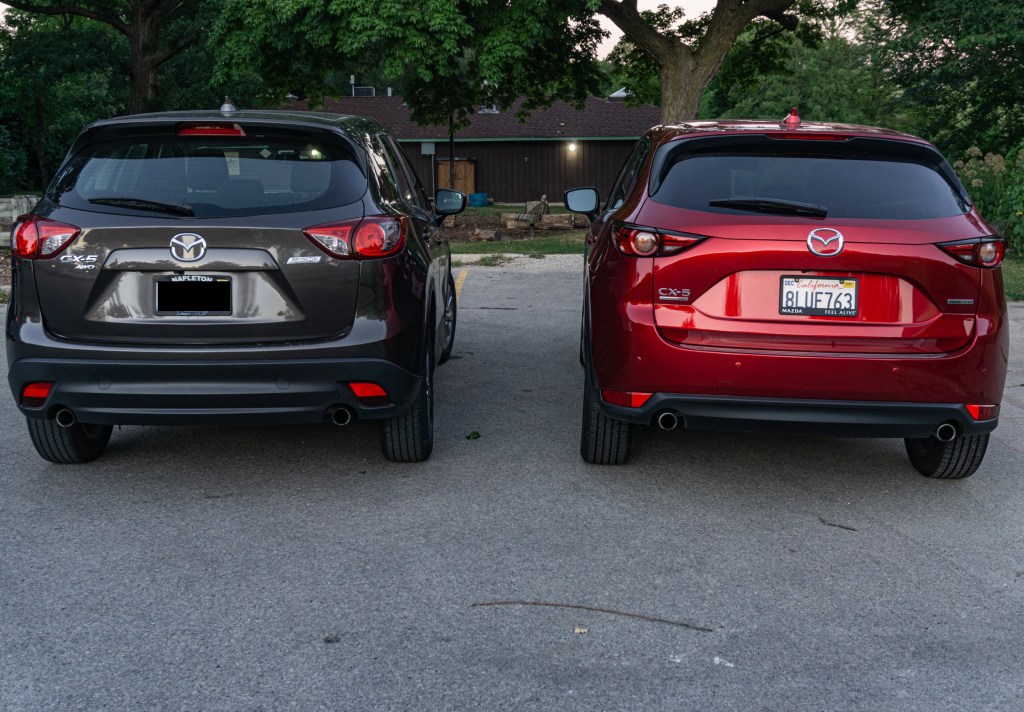
In the above photo, you can see that the 2020 CX-5 is lower than the 2016 model. That’s not due to the suspension: Motor Trend reports the redesigned crossover’s roof is 0.4” lower than the pre-redesign model. The new model is also marginally wider and longer, though while its wheelbase is shorter, it reportedly has more rear legroom.
The newer Mazda CX-5’s suspension and chassis are also distinct from the 2016’s, Car and Driver reports. The dampers move with less friction, and it has hydraulic bushings as well. Plus, the chassis is more rigid. And for 2020, Mazda gave the CX-5 even more sound deadening.
The 2016 and 2020 Mazda CX-5 differ inside, too. The center console is arranged more horizontally than vertically, Roadshow describes, with a free-standing touchscreen instead of a dashboard-integrated one. The belt-line is also higher in the new model, which makes it feel like you’re sitting further ‘in.’ Plus, the older model’s seats are narrower and more heavily-bolstered.
How does the 2020 Mazda CX-5 drive compared to the 2016 model?
Admittedly, my parents’ 2016 Mazda CX-5 has almost 40,000 miles on it. So, the suspension and steering components aren’t quite as pristine as the ones on the 2020 Signature, which arrived with 2800 miles. But even so, there’s a clear difference between the 2016 model and the 2020 one.
Compared to the 2020 CX-5, the 2016 model’s ride is about as stiff, but there’s less compliance in the suspension. You feel in the new car when you go over potholes, but in the older car, it’s more pronounced. It doesn’t drive harshly, exactly; the 2016 Mazda CX-5 just isn’t quite as well-dampened.
Also, the steering is both lighter and less direct; it’s not as tight. Part of that may come from Mazda bolting the redesigned CX-5’s steering rack directly to the subframe. And you can feel the difference in roof height, wheelbase, and track width: the 2020 CX-5’s center-of-gravity seems lower than in the 2016 model. The newer model drives more like a car—in a good way. Though, like the older one, its brake pedal still feels a bit squishy at the top of its travel.
Interestingly, the 2016 Mazda CX-5’s 2.5-liter naturally-aspirated engine sounds less coarse than the 2020 model’s turbocharged engine. The older car is louder inside, with more wheel, tire, and transmission noise. But the engine itself doesn’t sound as rough. However, the newer car’s transmission seems to have better software tuning. The 2016 transmission still shifts smoothly overall, but some low-speed maneuvers can make it a bit jerky.
Is a used pre-redesign model still worth considering?
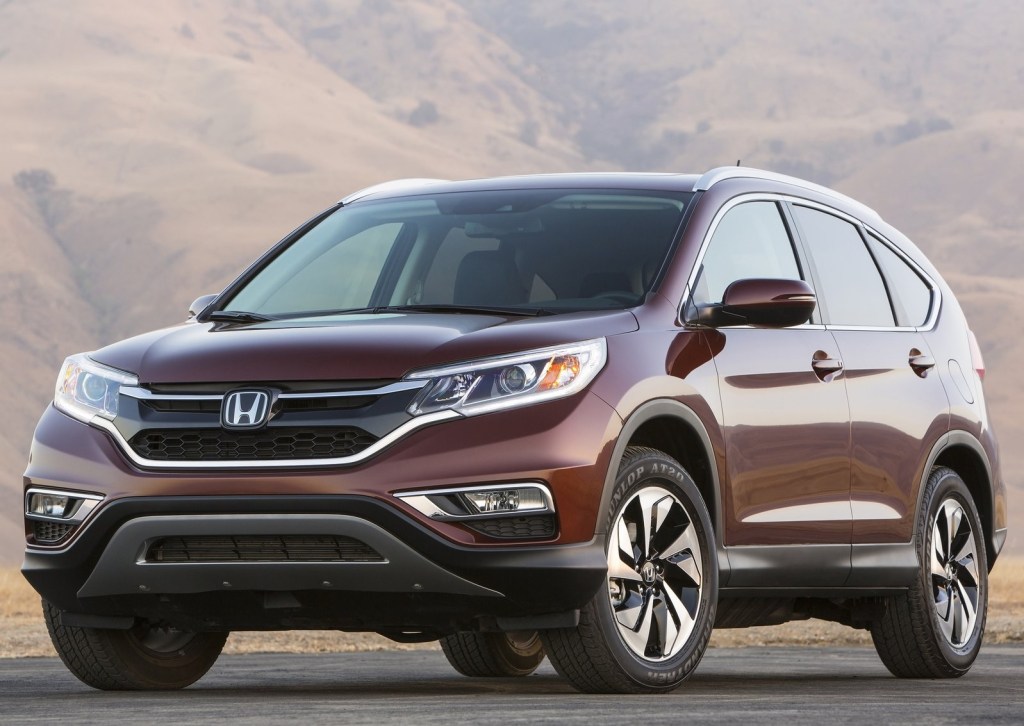
That’s not to say the 2016 Mazda CX-5 is a bad crossover. Although the 2016 model has had some notable issues, a pre-redesign CX-5 is still a great used purchase, Truck Trend reports. It’s not as sharp or supple on the road as the 2020 model, but it’s still reasonably fun to drive. Even without the latest ADAS features, it’s an IIHS Top Safety Pick. Plus, it beat out the contemporary Honda CR-V, Toyota RAV4, Hyundai Tucson, and Subaru Forester in Motor Trend’s comparison.
It’s also cheaper than getting a brand-new Mazda CX-5. Kelley Blue Book reports a 2016 CX-5 Sport AWD typically costs about $16,000. Meanwhile, a 2020 CX-5 Sport AWD starts at $26,590.
That being said, Autotrader prefers the redesigned model to the older one. Overall, it’s simply more refined, quieter, and even better to drive. And in addition to the extra standard tech, there’s the styling. Plus, a 2017 Mazda CX-5 Sport AWD is only about $2000 more than the pre-redesign model, KBB reports. At those prices, the redesigned CX-5 is worth the upcharge.
Follow more updates from MotorBiscuit on our Facebook page.


